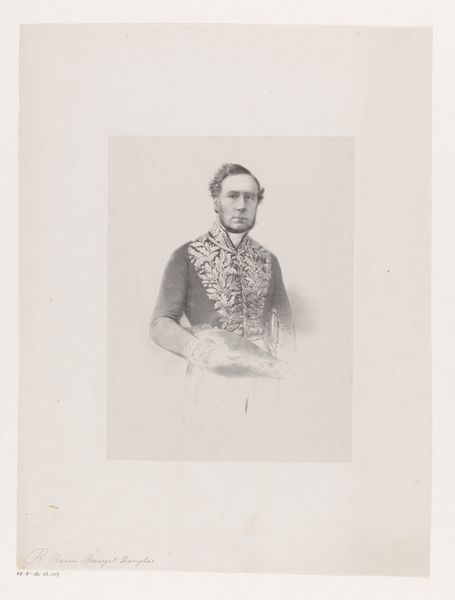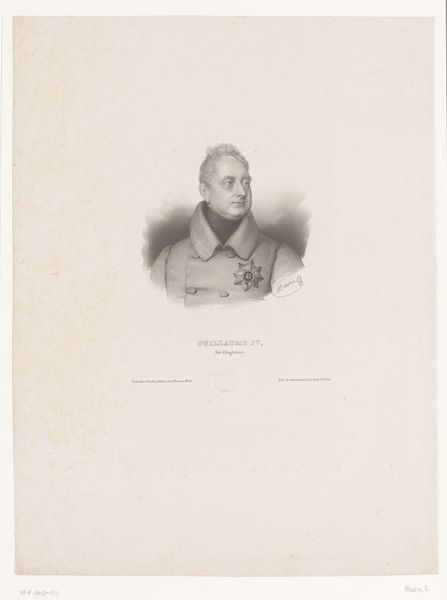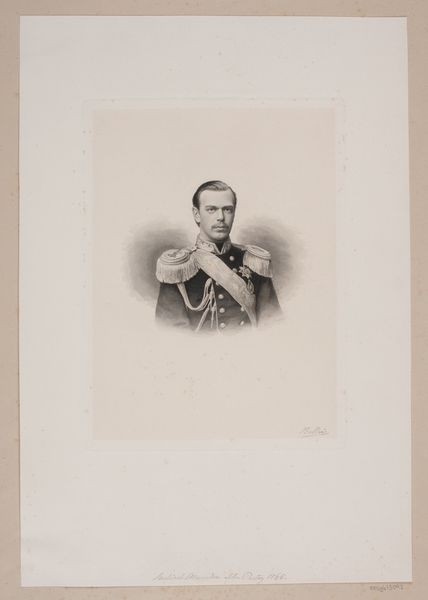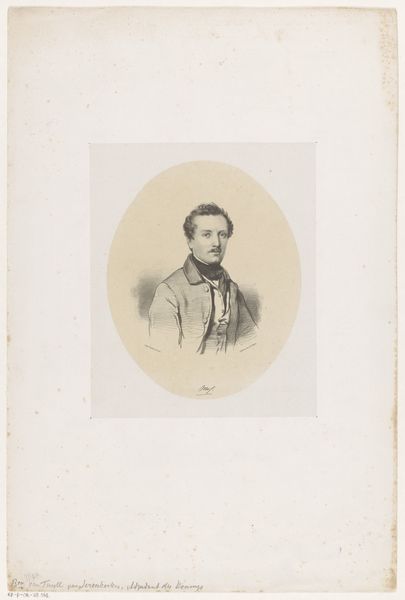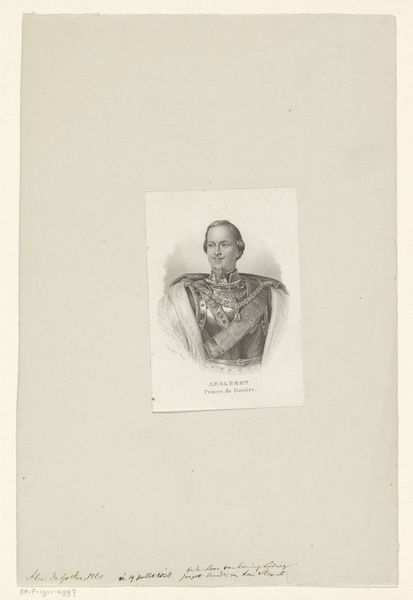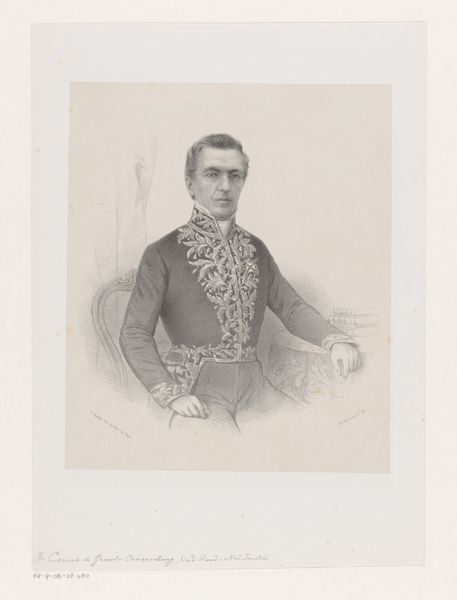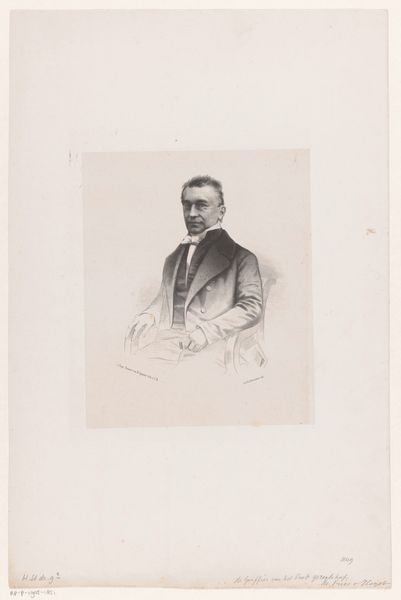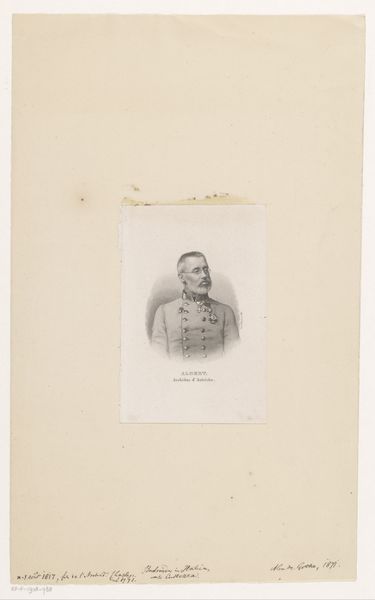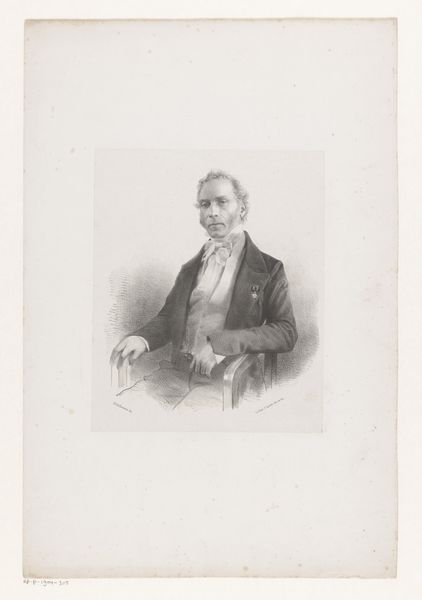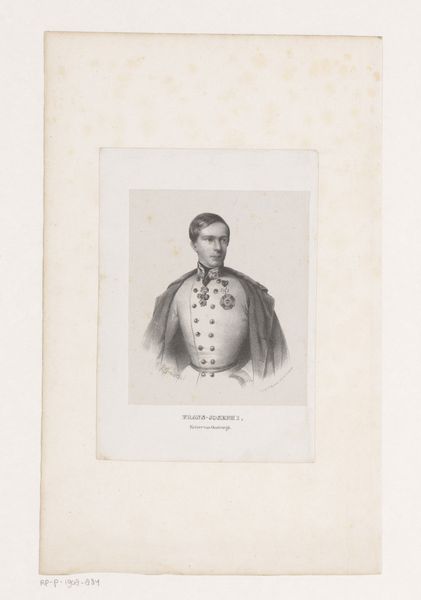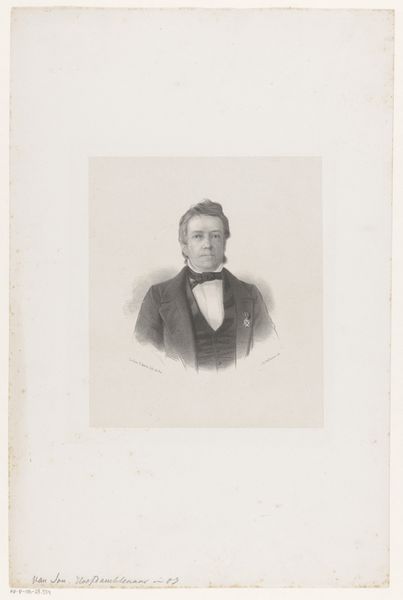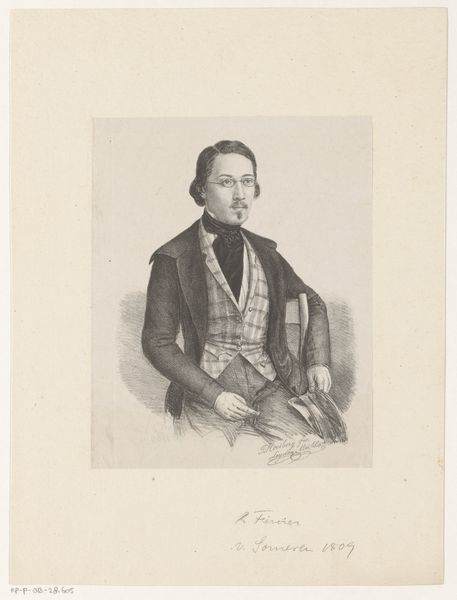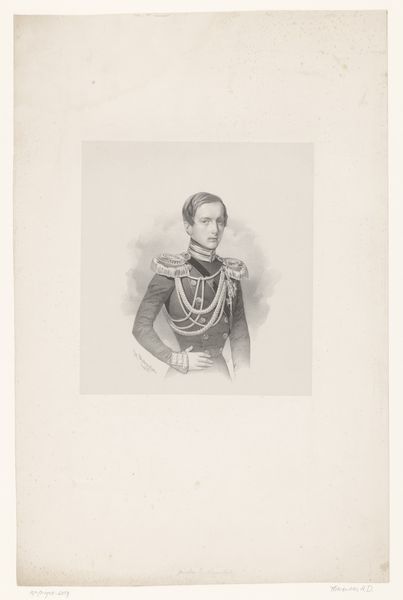
print, engraving
#
portrait
# print
#
romanticism
#
engraving
Dimensions: height 108 mm, width 71 mm
Copyright: Rijks Museum: Open Domain
Curator: This print is a portrait of Henry Hardinge, produced in 1847 by Carl Mayer. The piece utilizes engraving as its medium and finds itself comfortably within the Romanticism movement. What's your initial reaction? Editor: It’s rather...stark. The rigid posture, the steely gaze—everything screams authority and composure. There is such clear linearity, yet very few deep tones or color variation to create dramatic light and shade. Curator: Romanticism often romanticizes the individual and leans into sentimentalism and the awe of nature. Here, Hardinge seems quite composed. Note the almost obsessive detail in the medals and decorations. This speaks of Romanticism's fascination with hierarchy and order, too, doesn't it? Editor: Absolutely. Look at how the light falls almost uniformly across his face, devoid of drama or shadow. And, there's a rigid formality in the rendering of the uniform, as if Mayer were prioritizing the visual expression of the status over psychological complexity or deeper narrative. Curator: Though an engraving, one gets the feeling of layered brushstrokes attempting a softness – look particularly closely at the neck and cheeks! It’s a really interesting dynamic where, arguably, the technical choices work against the chosen subject. I wonder what stories are hidden within the details… Editor: Speaking of which, let's look more closely. Notice the artist’s name inscribed here, just above Hardinge's left shoulder—almost hidden within the folds of fabric. This placement suggests a subtle acknowledgement of the artisan's skill while subtly maintaining focus on the central subject. Curator: And the inscription below—'Viscount Hardinge', simply reinforcing the sitter’s importance. No room for nuance here! It's a calculated study in presenting Hardinge's rank with the sort of directness and precision that Romanticism simultaneously celebrated and questioned. Editor: Precisely. The engraving acts like a kind of mirror—it reflects the values of its time, but with the restraint that maybe hints at deeper societal undercurrents simmering beneath the surface. Overall, there is a subdued atmosphere for an image representing such grandeur and military glory! Curator: I find it captivating how Mayer renders such stoicism into art—offering a unique perspective, in my view, onto the character of an era, all from the gaze of one rather buttoned-up Viscount. Editor: It is as if, through its starkness, it almost demands us to ask, "What lies beneath?". Thanks for sharing your reflections!
Comments
No comments
Be the first to comment and join the conversation on the ultimate creative platform.
